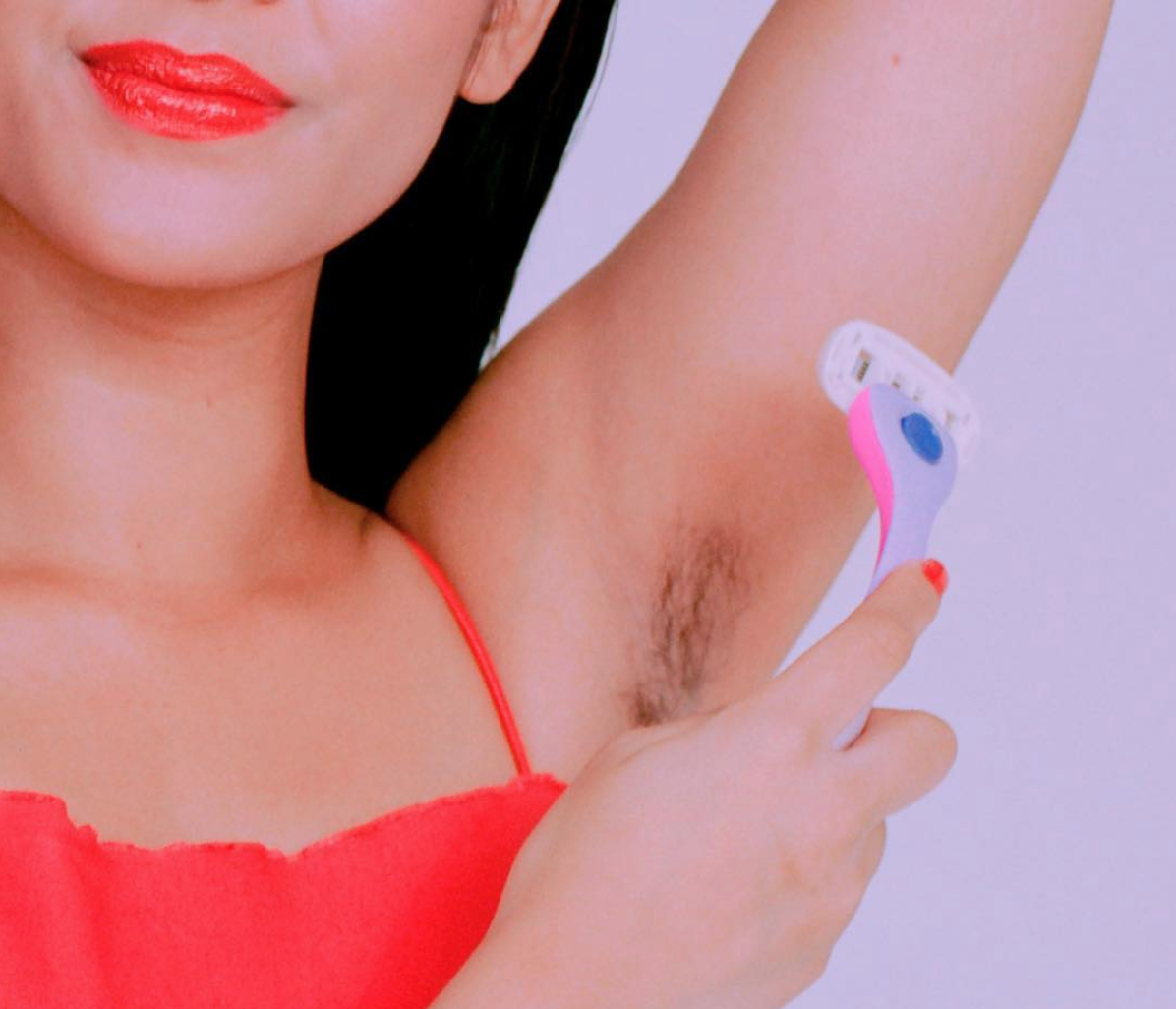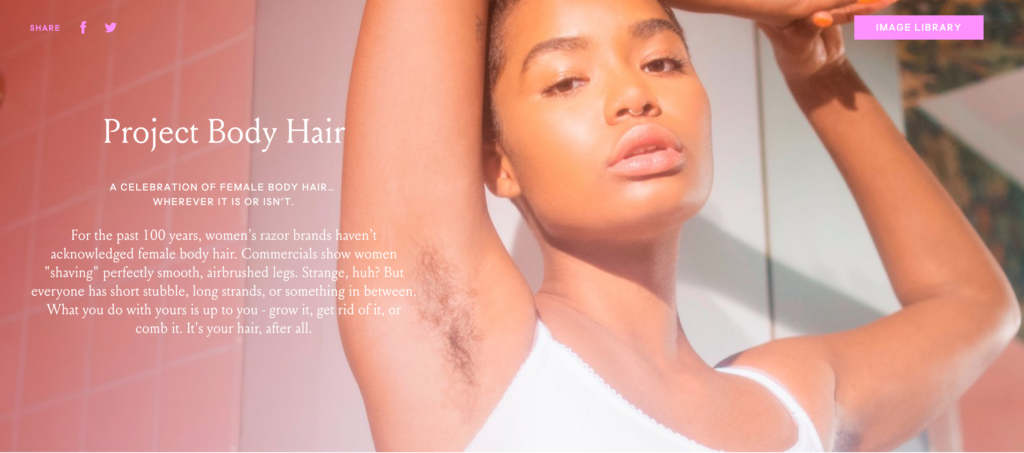To Shave or Not to Shave: Billie Doesn’t Care Either Way

It’s safe to say that hitting marketing firsts these days is tough, but in 2018, one B2C company did just that — and in an industry that’s more than 100 years old.
Billie made its mark as the first body-hair removal company to feature female models with body hair on their underarms and legs.
Billie’s marketing strategy seems obvious since the hair-removal industry relies on the presence of body hair to sell depilatories. But until recently, these companies highlighted the absence of body hair to turn a profit.
Take this Gillette Venus commercial, for example. We see a razor shaving an already-hairless leg.
It’s not like consumer advertising is known for accurately displaying reality, but this specific situation is a bit absurd when you think about it: The success of the hair-removal industry requires the very thing they work so hard to hide.
The history of female hair removal is much longer and more nuanced than the role it has played in U.S. consumerism. Nevertheless, its relationship with advertising has remained uniform. In 1915, Gillette created the first female razor, the Milady Décolleté, when consumer advertising started to take off on a mass scale.

Think about it: The industry is so obsessed with the erasure of a very basic human condition that they refuse to acknowledge its presence in order to sell its disappearance.
Billie has revolutionized razor marketing with its Project Body Hair campaign, which mostly takes place on Instagram and Facebook. Finally, the presence of female body hair is spotlighted.

Billie has also reframed the messaging of hair-removal ads targeting females. Corporations like Gillette focus so much on hairlessness that anything else becomes abnormal and even grotesque. But Billie advocates that women do whatever they want when it comes to their own body hair:
For the past 100 years, women’s razor brands haven’t acknowledged female body hair. Commercials show women “shaving” perfectly smooth, airbrushed legs. Strange, huh? But everyone has short stubble, long strands, or something in between. What you do with yours is up to you – grow it, get rid of it, or comb it. It’s your hair, after all.
Choice is the key differentiator here. This powerful change in rhetoric places more agency in the hands (and on the legs, underarms, and other body areas) of consumers.

Why the ads work, in a nutshell:
- They aren’t preachy. Billie is careful not to tell customers what to do with their product. Instead, they encourage customers to use their product — or not.
- Many of their ads feature the company’s public rejection of the pink tax. The term was dubbed so when a study found that 42% of the time, women’s items are upcharged by an average of 7% compared to the same exact items for men. Taking a public stance against this blatantly sexist phenomena is wise and also cleverly reveals that women don’t need to pay as much as they have been for razors. Packs of 5 razor heads can go for $16 or more, but with Billie you pay $9 for the same amount of blades.
- The simple choice to show underarm hair and leg hair in its natural state on women’s bodies gives this brand so much more authenticity than their corporate hairlessness-crazed counterparts. The hair is less an object of shame, and more a symbol of empowerment.
- The images on Billie’s social media fit the millennial influencer aesthetic. They are high-quality, interesting, and they position the brand to be a key social media influencer in an industry that has been out of touch with their core consumer base for too long.
Featured image from Billie’s Instagram page
